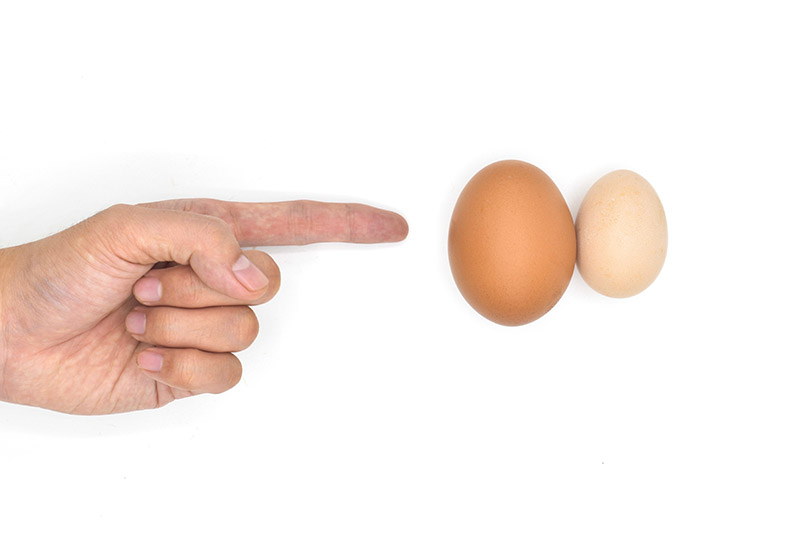Hydrocele is characterized by the presence of fluid around the testicle. If it does not resolve spontaneously, it should be treated as it is a risk factor for inguinal hernia

Hydrocele is a common condition affecting the male reproductive system, characterized by the presence of fluid around the testicle, causing swelling and discomfort. Although it can affect men of all ages, it is more common in newborns and older adults.
Congenital hydrocele is the result of a failure in the normal absorption of fluid around the testicle during fetal development. Acquired hydrocele, on the other hand, can arise as a result of scrotal trauma, infection, inflammation or obstruction of lymph flow in the area.
"When a child is born with a hydrocele, we should expect spontaneous resolution, which occurs in about 70% of cases by the age of two," says Dr. Ubirajara Barroso Jr., a pediatric urologist who practices in São Paulo and Salvador, where he is head of the division of reconstructive urological surgery and pediatric urology at the Hospital of the Federal University of Bahia (UFBA).
In this article, we explore everything you need to know about hydrocele, including what it is, what causes it, the symptoms and even the treatment options available. Read on and check it out.
What is hydrocele
Hydrocele is a medical condition that occurs when fluid accumulates around one or both testicles, causing swelling in the region of the scrotum.
Hydrocele can be congenital or acquired. According to Dr. Ubirajara Barroso, congenital hydrocele occurs more often in premature children, but it can also occur in those born at term.
Causes of hydrocele
The urologist explains that in some newborns, the duct that should close after birth remains open, maintaining a connection between the abdomen and the scrotum. "This can lead to a build-up of fluid around the testicle, forming a hydrocele."
"The testicles are located inside the fetus' abdomen and descend into the scrotum usually from the seventh gestational month onwards. Once they have descended, they form a tube called the peritoneovaginal duct. This is closed and spontaneously obliterated before birth," describes the specialist.
In acquired hydrocele, the doctor explains that there is a fluid collection around the testicle with no apparent cause (idiopathic) in 50% of cases. However, trauma, inflammation and tumors can also play a role in the development of this condition.
Hydrocele symptoms
"A hydrocele doesn't usually cause any pain. Occasionally, if it is very large, it can cause a feeling of local heaviness, due to the increase in scrotal volume," says Dr. Ubirajara Barroso.
The most common symptoms of hydrocele include:
- Swelling in the scrotum;
- A feeling of heaviness or pressure in the affected area;
- Increased testicle size.
In babies, hydrocele usually disappears on its own. However, in adults, it can persist and require medical treatment.
Treatments for hydrocele
Treatment for hydrocele can vary depending on the severity of the symptoms and the cause. In many cases, the hydrocele disappears spontaneously, especially in babies. However, in adults, medical procedures to drain the accumulated fluid or surgery to correct the condition may be necessary.
"In congenital hydrocele, the recommendation is to wait for spontaneous resolution, which occurs in around 70% of cases by the age of two. But if it doesn't resolve, we should perform surgery. Acquired hydrocele, on the other hand, should be treated if it is causing physical or aesthetic discomfort," says Dr. Barroso.
According to the specialist, a hydrocele can lead to a hernia if left uncorrected. "In congenital hydrocele, intestinal loops or intraperitoneal fat can insinuate themselves into the open peritoneovaginal canal, forming a hernia. This case is always surgical," he warns.
Dr. Ubirajara Barroso Jr. points out that in the treatment of congenital hydrocele, the approach is performed through an inguinal incision, followed by isolation, cutting and ligation of the peritoneovaginal duct. "As the structures are very delicate, in order to reduce the risk of injury to the testicular structures, the surgery should be performed under a magnifying glass to magnify the surgical field," he points out.
In acquired hydrocele, the procedure is carried out through a scrotal access, with eversion of the tunica vaginalis. "Recurrence in both congenital and acquired hydrocele is very rare," he concludes.
Dr. Ubirajara emphasizes the importance of treating the hydrocele, noting that if left untreated, it can lead to the development of a hernia in the child. This can result in an emergency situation that requires urgent surgery to avoid complications.
In acquired hydrocele, when it becomes more voluminous, it can cause a feeling of heaviness, problems with self-image and embedding of the penis. Occasionally, when the hydrocele causes a large increase in scrotal volume, a scrotoplasty may also be necessary to reduce the size of the scrotum.
If you have noticed an increase in the size of your son's scrotum, or if as a man you have felt discomfort in the scrotal region, make an appointment with Dr. Ubirajara Barroso for an evaluation. The doctor is based in Salvador and São Paulo.
